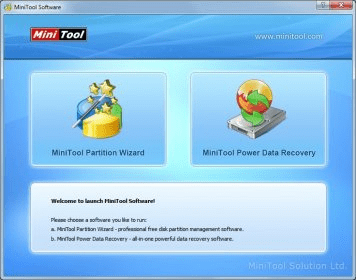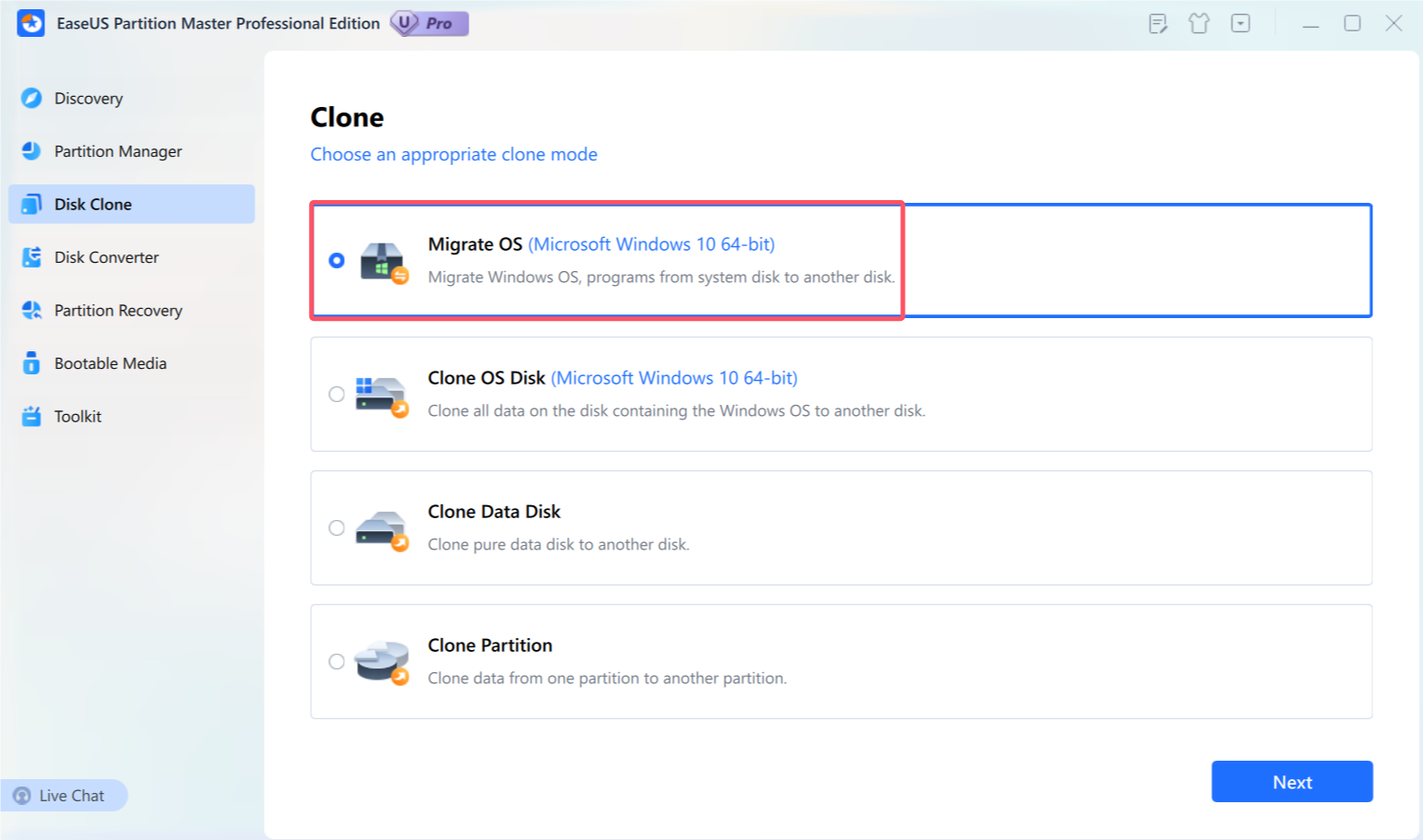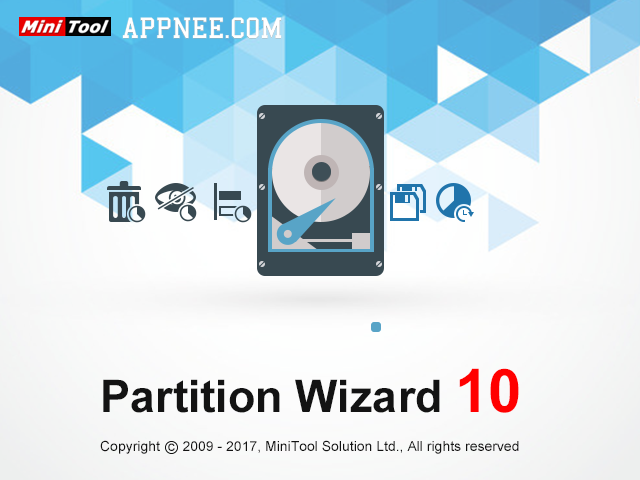EaseUS Data Recovery Wizard for Mac is an advanced and professional file recovery software for Mac devices. It is qualified to salvage, rescue, and recover lost data from hard drive/disk as well as many other storage devices, such as USB drive, SD card, digital camera, pen drive, and more. Step 10 Finally on the 'Completing the New Simple Volume Wizard', you will view the specification of the partition. To create the partition, click on 'Finish' and the partition is ready for use. How to Create Partition on Mac OS X.
Summary :
MiniTool Partition Wizard is not available for Mac but there are a few alternatives that runs on macOS with similar functionality. The best Mac alternative is Camptune X. If that doesn't work for you, our users have ranked more than 25 alternatives to MiniTool Partition Wizard, but unfortunately only two of them are available for Mac.
Which is the best Mac emulator for Windows? How to install a macOS virtual machine on PC? In this post, MiniTool Partition Wizard gives you a step-by-step guide on how to install a macOS virtual machine on PC via VMware.
Quick Navigation :
Best Mac Emulator for Windows
For many years, Mac and Windows PC have been two incompatible camps. Apple Mac series computers have always been niche products, and fewer people use them. In general, under the same configuration, Mac computers are almost twice as expensive as Windows computers.
However, comparing Windows PCs, the Mac PCs have a more beautiful design and are easier to use. If you don't want to buy an Apple computer but want to try this operating system, you can choose to either use hackintoshes or install a macOS virtual machine on Windows.
However, installing hackintoshes is very complicated. If your PC's specs are not very bad, installing a macOS virtual machine is recommended. Then, which is the best Mac emulator for Windows? Most people will choose between VirtualBox and VMware. I am of no exception.
At first, my choice is VirtualBox, because many people recommend using this software. I follow steps in these posts to install the macOS virtual machine, but the installation fails with no exception.

The reason may be that installing a macOS virtual machine on VirtualBox needs a file named 'VirtualBox Boot.vmdk'. I see this process in many videos but unfortunately many posts don't mention this step. In addition, if you want to get this file, you must download it from some posts that are some private websites full of ads. I don't like that, so I choose to try VMware.
Fortunately, my colleague in technical department has ever succeeded in installing a macOS virtual machine with VMware. Thanks to him, this post can be completed smoothly. So, in my mind, VMware is the best Mac emulator for Windows, although this judgment is a little subjective.
Preparatory Work
To run Mac on Windows smoothly, you should make sure your PC meets the following requirements:
- CPU: 4th Intel i5 or higher (if you AMD CPU, you will encounter more errors and bugs)
- RAM: at least 8GB
- Storage: more than 100 GB free space
- OS: 64-bit Windows 7 or later
If your PC doesn't meet the above system requirements, the macOS VM will freeze frequently. Then, you should get the following thing prepared:
- VMware software and unlocker file.
- A partition specialized for the macOS virtual machine (optional).
- A macOS image in .cdr format.
1. Install VMware and Download Unlocker
Both VMware Workstations Pro and VMware Workstation Player (the free version) are OK. You just need to install one of them. The installation process is very simple. You just need to download this software from its official website and install it normally. If you have VMware installed already, you can skip this step.
This post shows you what causes error 'VMware Workstation Pro can't run on Windows' and offers you 4 solutions.
Then, you need to download the unlocker file that is the key file making VMware allow you to install macOS virtual machine. The unlocker file is released on GitHub, an open-source project hosting platform. On this platform, the developer will publish the source code of the unlocker file. Therefore, in my mind, the unlocker file is reliable. Please follow the steps below:
Step 1: Go to the website: https://github.com/paolo-projects/unlocker and click Release. Then, download the latest unlocker.zip file.
Step 2: Close VMware software. Then, right click blank area of the Taskbar and choose Task Manager. In the Processes tab, right-click and end any tasks related to VMware.
Step 3: Extract the unlocker.zip file. Open the extracted folder to find win-install.cmd file. Right click this file and choose Run as administrator. Then, this file will run to get some tools for VMware. All you need do is to wait for the window to shut down automatically.
How to troubleshoot 100 percent disk usage in Windows 10? This post focus on the solutions to Windows 10 100% disk usage.
2. Make a Partition
This step is recommended, because the virtual machine file will become larger and larger. Placing all virtual machine files into one partition is in favor of centralized management. To make a partition, you can use the shrink volume feature in Disk Management. But MiniTool Partition Wizard can help you make a partition more easily.
Step 1: Launch MiniTool Partition Wizard (free edition) and go to its main interface. Right click a partition and choose Move/Resize. This will open a window.
Step 2: In the window, drag the arrow to resize the partition. If you drag the whole partition block, you can change the location of the partition. Through this way, you can make unallocated space on the location you want. Click the OK button to continue.
Step 3: Right click the unallocated space and choose Create. Just keep everything in default and click the OK button.
Step 4: Click Apply button to execute the pending operations.
You can enlarge the hard disk of virtual machine if you set the disk to be so small at the beginning of creating virtual machine, and here are detailed steps.
3. Get a MacOS Image in .cdr Format
Where to get macOS .cdr image? You can create it by yourself or download it online. If you want to create by yourself, here is the guide:
Step 1: Download a macOS installation package (for example, Install macOS Catalina. app) from the Apple Store into the apps directory.
Step 2: Open the terminal and perform the following commands:
- hdiutil create -o /tmp/Install macOS Catalina -size 8300m -layout SPUD -fs HFS+J (* This command will create an empty .dmg disk image with a size of 8300m under /tmp The .dmg image should be at least 500M larger than the macOS app file. In addition, Install macOS Catalina is the name of the .dmg disk image, you can replace it accordingly.)
- hdiutil attach /tmp/Install macOS Catalina.dmg -noverify -mountpoint /Volumes/Install macOS Catalina (* This command will mount the .dmg image that you created just now to directory /Volumes/Install macOS Catalina.)
- sudo /Applications/Install macOS Catalina.app/Contents/Resources/createinstallmedia --volume /Volumes/Install macOS Catalina (* This command will write the macOS app file into the .dmg disk image you mounted just now. Then, you need to enter password and wait for the writing process to complete.)
- hdiutil detach /Volumes/Install macOS Catalina (* This command will unmount .dmg disk image.)
- hdiutil convert /tmp/Install macOS Catalina.dmg -format UDTO -o ~/Desktop/Install macOS Catalina (* This command will convert the .dmg image into .cdr image and save it into desktop with the name 'Install macOS Catalina'. Wait until the process to complete and then you can find the .cdr file on your desktop.)
- rm /tmp/Install macOS Catalina.dmg (* This command will delete the .dmg image in the tmp folder to free up space.)
How to Create a MacOS Virtual Machine with VMware
Now you can install Mac on Windows with VMware, the best Mac emulator for Windows. Here is the guide:
Step 1: Open VMware and click File > New Virtual Machine. Choose Typical and click Next.
Step 2: Choose Installer disc image file (iso) and click Browse. This will allow you to choose the macOS image file. But please note that you can see the .cdr image only if you modify the file type to All files. Then, click Next.
Step 3: Choose Apple Mac OS X and pick the right version. Then, click Next.
Step 4: Check the name and the location of the macOS virtual machine. Then, click Next. Specify disk capacity. Please make sure the max size is at least 40 GB and then click Next. Then, click Finish.
Tool Partition Wizard Mac Os
Step 5: Go to VM > Settings. In the Virtual Machine Settings window, you can change the macOS hardware settings. I recommend you to change the Memory to at least 4GB, otherwise the macOS virtual machine will not run smoothly. Click OK to save changes.
Step 6: Then, you need to modify the configuration file, otherwise you will get VMware unrecoverable error when booting the macOS. First, please navigate to the location of the macOS virtual machine in your PC. Right click the macOS virtual machine configuration file (.vmx) and open it with notepad.
Step 7: In the notepad, scroll down to find the code line: smc.present = 'TRUE'. Under this code line, add the following code line: smc.version = '0'. Then, save and exit. Now, you can start the macOS virtual machine and it should open smoothly.
This post introduces virtualization technology (VT-x and AMD-V) and shows you how to enable it in BIOS to solve not in a hypervisor partition error.

Step 8: Follow the on-screen wizard until you are asked to choose a disk for installing the macOS. In this case, go to Utilities > Disk Utility. Click the VMware Virtual SATA Hard Drive Media in the left panel and click Erase. Follow the wizard to rename and erase the disk. After completing this process, exit Utilities tool and choose the disk you just renamed to install macOS on it.
Step 9: Follow the wizard to customize settings and then you can use the macOS on your PC.
Bottom Line
Is this post useful to you? Have you encountered problem when following the above steps to install macOS virtual machine? Do you know other good Mac emulators for Windows? Please leave a comment in the following zone.
In addition, if you have difficulty in moving/resizing partition, please contact us via [email protected]. We will get back to you as soon as possible.
Mac Emulator for Windows FAQ

- Install VMware and download unlocker file from GitHub.
- Get a macOS image in .cdr format.
- Create a macOS virtual machine in VMware with the macOS image.
- Modify the macOS configuration file.
- Perform macOS installation process.
Summary: This blog helps you restore the Mac when recovery partition is missing or not found.
Do avail the trial version of Stellar Data Recovery Professional software if need for data recovery arises.
Recovery HD is a hidden partition on your macOS and OS X. In times of macOS corruption or other notorious troubles where OS doesn’t perform as expected, you can use the Recovery HD to restore Mac to default settings. However, restoring Mac OS X will remove all the data that exists on your hard drive. On a brighter side, it will eliminate the macOS corruption and Macintosh HD will be occupied with a fresh copy of OS X.
Tip: Backups are recommended
Restoring a Mac is as simple as anything
- Press Option key before startup
- Click RecoveryHD
- Select ‘ReinstallmacOS’
- Click ‘Continue’
Partition Software For Mac

With the above wizard, the Mac will be restored to macOS. The process is simple and intuitive since the Recovery HD partition is easily accessible.

How Recovery HD goes Missing?
This hidden but helpful partition may get deleted when Apple’s hard drive is partitioned incorrectly. Other instances of loosing or deleting Recovery HD would be the installation of Windows OS, Linux OS on the hard disk drive. At times, the user also loses the Recovery HD by accidentally wiping it from the Mac.
In absence of Recovery HD partition, it is almost impossible to restore a Mac unless a bootable USB isn’t available.
Startup Menu!
Check whether your iMac or MacBook computer is still showing a workable Recovery HD? Use the below steps for locating the Recovery HD partition:
- Switch off the Mac system and turn it on again
- Without delay, press the Option key to launch Mac’s startup drive menu
- Once the startup drive menu is loaded you may locate the Recovery HD alongside your startup disk. However, if the Recovery HD is missing then you can confirm its loss or deletion
- Restart macOS since Recovery HD isn’t found
Mighty Terminal!
- Launch Terminal and type diskutil list
- The terminal will throw you an output as below:
- Usually, Recovery HD is listed third from the top i.e. disk0s3
If the terminal displays your Recovery HD in the list of all mounted partitions then you should launch Recovery Mode however you must reset the PRAM.
Also ReadList of Top 5 Mac Hard Disk Drive Repair Software
Internet Recovery!
No luck in locating the Recovery HD partition even after the Terminal shows it up, then you must take the help of Internet Recovery. This option is available for Mac to reinstall macOS using the Internet. Follow below processes:
- Shut down the Mac and power it up
- Press and hold Command + Option + R until the screen displays a globe with the message “Starting Internet Recovery. This may take a while”
- Soon the macOS utilities will load on the screen, which will provide the option ‘Reinstall macOS’.
After a successful installation of the macOS through Internet Recovery, the missing / deleted or lost Recovery HD will also be restored.
Mac Data Recovery Software
A data recovery software can’t restore OS X neither it can provide any help in locating a missing Recovery HD. However, Stellar Data Recovery Professional for Mac helps the user to boot up a corrupt or inaccessible Mac and recover files from the startup disk. Once data is salvaged from the troublesome Mac startup drive, the user can then go ahead with the Mac restore.